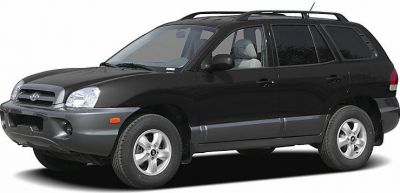 1998 Subaru Forester I Dimensions, Size & Specs
1998 Subaru Forester I Dimensions, Size & SpecsMeasurements of the 1998 Subaru Forester I, engineered for optimal performance and comfort
| Dimensions | |
|---|---|
| Length: | 4450-4460 mm175.2-175.6 in14.6-14.6 ft |
| Width: | 1735 mm68.3 in5.7 ft |
| Height: | 1580-1595 mm62.2-62.8 in5.2-5.2 ft |
| Trunk Capacity: | 406-410 liter14.3-14.5 cu ft |
| Trunk Capacity (Max): | 1525-1530 liter53.9-54.0 cu ft |
| Weight Specifications | |
| Curb Weight: | 1380-1445 kg3042-3186 lbs |
| Maximal permitted Weight: | 1860-1935 kg4101-4266 lbs |
| Tire Specifications | |
| Rims Size: | 15-inch rims:
|
| Tire Sizes: |
|
The Subaru Forester I, produced between 1997 and 2002, marked Subaru's entry into the compact SUV segment with practical dimensions and versatile utility. The 1998 model year of this first-generation Forester features a length varying from 4450 to 4460 mm (175.2 to 175.6 inches), making it manageable for urban driving yet spacious enough for family adventures. With a width of 1735 mm (68.3 inches) and height ranging between 1580 and 1595 mm (62.2 to 62.8 inches), the Forester offers a balanced, robust stance on the road without excessive bulk.
In terms of weight, the curb weight ranges from 1380 to 1445 kg (3042 to 3185 lbs), aligning well with other compact SUVs of its time. The maximum allowed weight spans from 1860 to 1935 kg (4101 to 4267 lbs), highlighting its solid build and capacity for carrying passengers and cargo safely. One of the Forester I's notable features is its generous luggage capacity: 406 to 410 liters (14.3 to 14.5 cubic feet) with rear seats up and an impressive expansion up to 1525 to 1530 liters (53.9 to 54.0 cubic feet) when rear seats are folded flat, providing ample space for gear, groceries, or outdoor equipment.
This generation typically comes with 15-inch rims sized 6J x 15, paired with popular tire size options such as 205/70R15 and 215/60R16, ensuring a blend of comfort and off-road capability. Overall, the Subaru Forester I balances compact SUV agility with practical interior space and a dependable design, making it an enduring choice for drivers needing versatility without compromising on manageable dimensions.
Discover the standout features that make the 1998 Subaru Forester I a leader in its class
Have a question? Please check our knowledgebase first.
The Subaru Forester I, produced between 1997 and 2002, has a length ranging between 4450 mm and 4460 mm (approximately 175.2 to 175.6 inches). Its width measures 1735 mm (around 68.3 inches), and the height varies from 1580 mm to 1595 mm (about 62.2 to 62.8 inches). These dimensions give the Forester I a compact yet practical size suitable for an SUV, balancing interior space with manageable road presence.
The curb weight of the Subaru Forester I ranges from 1380 kg to 1445 kg (approximately 3,042 to 3,186 lbs), while its maximum weight is between 1860 kg and 1935 kg (around 4,101 to 4,265 lbs). The relatively moderate weight helps the Forester maintain good fuel efficiency and nimble handling for an SUV of its era. The weight distribution also aids the vehicle's stability and off-road capability, given Subaru's symmetrical all-wheel-drive system. However, variations in weight could result from different trims or added equipment, which might slightly affect acceleration and fuel consumption.
The Subaru Forester I offers a practical luggage capacity starting at 406 liters and going up to 410 liters (approximately 14.3 to 14.5 cubic feet) with the rear seats in an upright position. When the rear seats are folded, the capacity significantly increases to between 1525 liters and 1530 liters (around 53.9 to 54 cubic feet). This flexible space makes it suitable for carrying larger items or increased cargo, which is a notable advantage for families or outdoor activities requiring more storage.
The Subaru Forester I typically comes equipped with rims sized 6J x 15. The standard tire sizes include 205/70R15 and 215/60R16. The 15-inch rims with these tire specifications provide a good balance between ride comfort, off-road capability, and handling. The 205/70R15 tires offer taller sidewalls that absorb road imperfections well, enhancing ride smoothness, while the 215/60R16 can deliver better grip and stability on both paved and uneven surfaces. This setup complements the vehicle's SUV nature, offering versatility across different driving conditions.
Yes, the Subaru Forester I fits comfortably into a standard garage. With a length of about 4450-4460 mm (175.2-175.6 inches), width of 1735 mm (68.3 inches), and height between 1580-1595 mm (62.2-62.8 inches), it falls well within typical garage size limits found in many homes, which often accommodate vehicles up to 6 meters (19.7 feet) long and roughly 2.4 meters (7.9 feet) wide. Its compact size relative to many larger SUVs ensures easy parking and garage storage without requiring special accommodations.
The Subaru Forester I represented a new model line introduced in 1997, meaning it did not have a direct predecessor in Subaru's SUV lineup. Compared to competing compact SUVs of its time, like the Honda CR-V or Toyota RAV4, the Forester I offered similar length and width but often featured a slightly more rugged and taller stance with its nearly 1.6-meter height (about 62.8 inches). This gave it a strong presence while maintaining compact maneuverability. Its overall dimensions struck a balance between urban usability and off-road functionality, distinguishing it from boxier or more road-biased competitors.
The Subaru Forester I delivers an interior space that is roomy for its class, supported by its external dimensions which provide ample headroom due to a height up to 1595 mm (62.8 inches). Its spacious luggage capacity of over 400 liters with seats up and over 1500 liters folded speaks to its versatile design. The relatively wide width of 1735 mm (68.3 inches) allows for comfortable seating arrangements, making it a practical option for families and outdoor enthusiasts who require a compact footprint but generous interior volume.
Compared to the second generation Subaru Forester introduced in the early 2000s, the Forester I was slightly smaller in overall dimensions. The second generation generally grew in length, width, and height to provide enhanced interior space and improved road presence. Design-wise, while the Forester I focused on a boxy, utilitarian SUV look, the successor adopted smoother, more aerodynamic lines and refined styling cues. These changes helped the newer generation offer more comfort, updated safety features, and a modernized driving experience while retaining the original’s practical footprint.
Weighing in between 1380 kg and 1445 kg (3,042 to 3,186 lbs), the Forester I is relatively lightweight compared to many mid- and full-sized SUVs from the late 1990s and early 2000s, which often exceeded 1,600 kg (3,527 lbs). This lighter weight, in combination with Subaru's all-wheel-drive system, contributed to better fuel economy and more agile handling. It also enhanced the vehicle's responsiveness and off-road capability, allowing it to maneuver effectively both in urban environments and on rough terrains where heavier SUVs might struggle with agility.
In the compact SUV segment during its production years (1997-2002), the Subaru Forester I competed with models such as the Honda CR-V, Toyota RAV4, and Nissan R'nessa in some markets. All these vehicles offered similar lengths (around 4.4 to 4.5 meters) and widths close to 1.7 meters, positioning them well for city use with off-road capability. The Forester distinguished itself with its standard all-wheel drive, slightly taller roof height for better interior spaciousness, and rugged styling, making it a popular choice for buyers seeking versatility between urban driving and outdoor activities.
Discover similar sized cars.

| Production: | 2021-present |
|---|---|
| Model Year: | 2022 |
| Length: | 4490 mm176.8 in |
| Width: | 1780 mm70.1 in |
| Height: | 1651-1685 mm65.0-66.3 in |

| Production: | 2000-2006 |
|---|---|
| Model Year: | 2001 |
| Length: | 4500 mm177.2 in |
| Width: | 1820 mm71.7 in |
| Height: | 1655-1730 mm65.2-68.1 in |

| Production: | 2021-2023 |
|---|---|
| Model Year: | 2021 |
| Length: | 4480 mm176.4 in |
| Width: | 1810 mm71.3 in |
| Height: | 1646 mm64.8 in |

| Production: | 2021-2023 |
|---|---|
| Model Year: | 2022 |
| Length: | 4480 mm176.4 in |
| Width: | 1810 mm71.3 in |
| Height: | 1660 mm65.4 in |

| Production: | 2002-2008 |
|---|---|
| Model Year: | 2003 |
| Length: | 4450 mm175.2 in |
| Width: | 1735 mm68.3 in |
| Height: | 1590 mm62.6 in |
